Hoe lang zal een 48 Volt Battery Last?
Wanneer u een energieopslagsysteem voor uw huis plant, vooral voor zonne- of back -upkracht, Het 48-volt platform is een populaire en efficiënte standaard. Een belangrijke vraag die zich natuurlijk voordoet, is, "Hoe lang zal een 48V -batterij daadwerkelijk duren?" Het antwoord staat niet alleen in de spanning; Het wordt bepaald door de capaciteit van de batterij en hoe u het gebruikt.
De looptijd van een 48V-batterij hangt volledig af van zijn versterker (Ah) of kilowattuur (kWh) Capaciteitsbeoordeling en de stroomtrekking (in watt) Van de apparaten die u rijdt. Een batterij van een grotere capaciteit, zoals een 48V 200AH -eenheid, zal twee keer zo lang duren als een 48V 100AH -eenheid onder dezelfde belasting. Moderne 48V muur gemonteerde batterijsystemen maken het gemakkelijk om de juiste capaciteit voor uw behoeften te kiezen.
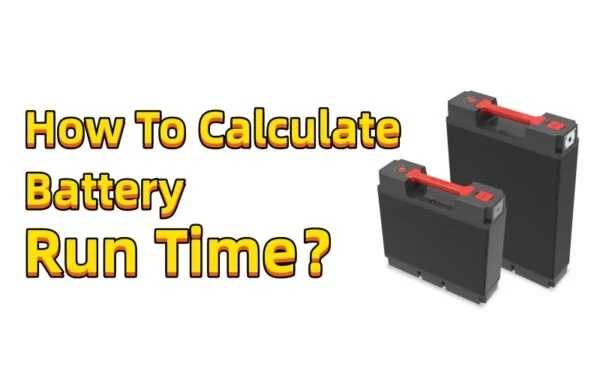
Bij Gycx Solar, Wij zijn gespecialiseerd in het ontwerpen van 48V -energiesystemen die betrouwbaar zijn, langdurige kracht. Laten we afbreken hoe we de looptijd kunnen berekenen en enkele andere kritieke vragen over deze krachtige batterijen kunnen beantwoorden.
Hoeveel zonnepanelen heb ik nodig om een 48V 100Ah -batterij op te laden?
Het koppelen van uw 48V 100AH -batterij met zonnepanelen is de sleutel tot echte energie -onafhankelijkheid. Maar hoe geeft u uw zonnepaneel af om ervoor te zorgen dat uw batterij elke dag een volledige lading krijgt?
Om betrouwbaar een 48In 100Ah (dat is 4.8 kWh) accu op een typische dag, Over het algemeen zou u een zonnepaneelarray van ongeveer nodig hebben 1.5 kW tot 2.5 kW. Dit vertaalt zich over ongeveer 4 naar 6 modern, zeer efficiënte 400W zonnepanelen. Het exacte aantal hangt af van uw specifieke locatie, De tijd van het jaar, en lokale weerpatronen.
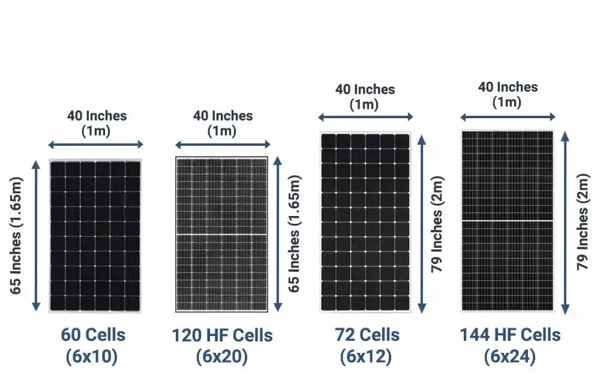
Duik dieper: Verschillende regionale klimaten
Hier is hoe we de juiste maat voor zonne -array bepalen:
- Energie om aan te vullen: A 48V 100AH LFP (Lithium-ijzerfosfaat) Batterij slaat rond 4.8 kWh van energie. Om het dagelijks volledig op te laden, U moet dit bedrag plus een beetje extra genereren om het systeemverliezen te dekken.
- Piekzonuren (PSH): Dit is een cruciale factor die per seizoen varieert. In Japan, Misschien kom je er overheen 4.5 PSH in de zomer maar alleen 2.5-3 PSH op een heldere dag in de winter. Wij ontwerpen systemen op basis van een conservatief gemiddelde het hele jaar door (Bijv., 3.5 - 4 PSH) om het grootste deel van het jaar betrouwbaar te betalen.
- Systeemverliezen: Wij zijn rekening met verloren energie door paneelwarmte, bedrading, en de efficiëntie van de MPPT -ladingscontroller (typisch 15-25% Totaal verlies).
- De berekening:
- Vereiste zonne -energie (kW) = Energie nodig (kWh) / (Piekzonuren x efficiëntiefactor)
- Voorbeeld:
4.8 kWh / (3.5 hours x 0.80 efficiency) = 1.7 kW (1700 Watts) - Dit zou betekenen
1700W / 400W per panel ≈ 4 to 5 panels. We raden vaak een extra paneel aan om een buffer te bieden voor bewolkte dagen.
Dit zorgvuldig, Locatiespecifieke grootte zorgt ervoor dat uw batterij klaar is om u door de nacht of het volgende tyfoonseizoen te sturen.
Wat is de back -uptijd voor een 100Ah 48V lithiumbatterij?
Laten we specifiek worden. Je hebt een 100Ah 48V lithiumbatterij. Hoeveel uur back -upkracht kunt u er eigenlijk van verwachten tijdens een stroomstoring?
EEN 100AH 48V Lithium -batterij biedt een totaal van 4,800 wattuur (Wh) of 4.8 kilowattuur (kWh) van energieopslag. De back -uptijd is deze totale energie gedeeld door het stroomverbruik van uw apparaten. Bijvoorbeeld, het kan een 480-watt laden voor ongeveer 10 uur of een lichter 200-watt laden voor 24 uur.
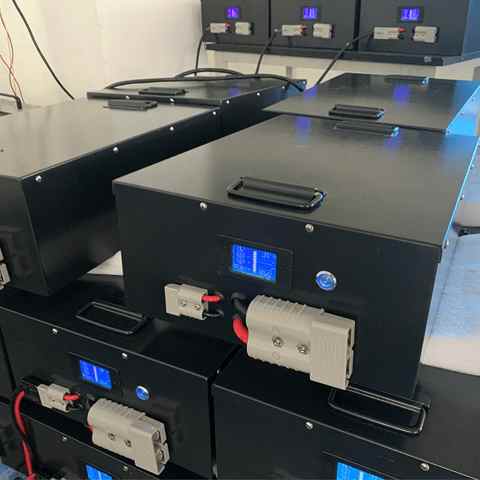
Duik dieper: Het berekenen van uw back -up runtime
Hier is de eenvoudige wiskunde:
Looptijd (Uren) = Totale energie (Wh) / Uw lading (Watt)
Laten we eens kijken naar enkele praktische scenario's voor een huis:
- Scenario 1: Essentiële ladingen (ca.. 300W): Tijdens een storing, U runt uw efficiënte koelkast, Verschillende LED -lichten, Uw internetrouter voor updates, en uw telefoons opladen.
4,800 Wh / 300 W = 16 hours
- Scenario 2: Matige belastingen (ca.. 800W): U voegt een televisie en een rijstkoker toe aan de essentie.
4,800 Wh / 800 W = 6 hours
Dit is de reden waarom modern 48v Wall gemonteerde batterij Systemen zijn zo populair. Een enkele 4.8kWh -module biedt een uitstekende back -up voor essentiële zaken. En omdat ze modulair zijn, U kunt eenvoudig een tweede eenheid toevoegen om uw back -uptijd te verdubbelen voor meer gemoedsrust. Bij GYCX Solar, Wij helpen u een load -analyse uit te voeren om ervoor te zorgen dat u de back -uptijd krijgt die u verwacht.
Gaan lithiumbatterijen slecht van zitten?
Wat als u een batterijsysteem heeft, maar het een tijdje niet gebruikt? Kan een lithiumbatterij slecht worden door te zitten in de opslag, ongebruikt?
Alle batterijen, inclusief lithium-ion, zal na verloop van tijd langzaam afbreken, zelfs als ze niet in gebruik zijn. Dit wordt genoemd kalenderveroudering. Echter, Moderne LFP (Lithium-ijzerfosfaat) Batterijen zijn uitzonderlijk stabiel. Ze hebben ook een heel laag zelfontladingssnelheid (1-3% per maand), wat betekent dat ze heel weinig lading verliezen terwijl ze zitten. De sleutel tot het waarborgen van een lang leven in opslag is om ze in een coole plek bij een Gedeeltelijke toestand van kosten (rondom 40-60%).
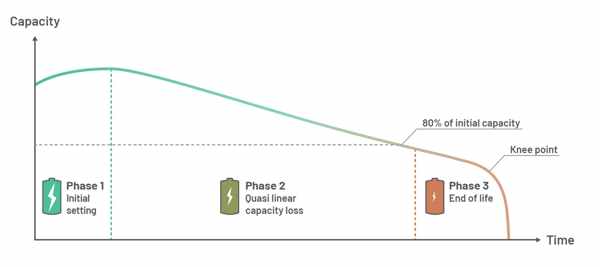
Duik dieper: Kalender veroudering vs. Zelfontlading
Het is belangrijk om de twee manieren te weten waarop een batterij ouder wordt tijdens het stationair:
- Zelfontlading: Dit is het tijdelijke en langzame verlies van lading. U kunt de batterij eenvoudig opladen om deze te herstellen. Het lage percentage LFP -batterijen betekent dat u ze meer dan een jaar kunt opslaan en ze zullen nog steeds een aanzienlijke lading behouden.
- Kalenderveroudering: Dit is de permanente, onomkeerbaar capaciteitsverlies dat gedurende jaren plaatsvindt, Ongeacht het gebruik. De snelheid van dit proces wordt sterk beïnvloed door twee factoren:
- Temperatuur: Warmte is de grootste vijand. Een batterij die in een hete omgeving is opgeslagen, zal veel sneller verouderen dan één die is opgeslagen in een cool, klimaatgecontroleerde ruimte.
- Staat van lading: Voor langdurige opslag, Een lithiumbatterij bijhouden 100% Volledige stress op zijn cellen en versnelt het verouderen. Het opslaan bij 0% is ook gevaarlijk. EEN 40-60% lading is de ideale strees van lage stress voor opslag.
Een goed opgeslagen LFP -batterij kan heel lang zitten en gezond blijven en klaar zijn voor service.
Kan een lithiumbatterij in brand vullen wanneer ze niet opladen?
Batterijveiligheid is de belangrijkste overweging. We horen vaak over branden met betrekking tot opladen, maar kan een hoogwaardige lithium batterij1, zoals een in een thuisopslagsysteem, Vloeg in brand als het daar gewoon zit, niet opladen of ontladen?
Het is uiterst zeldzaam voor een hoge kwaliteit, onbeschadigde lithiumbatterij om spontaan in brand te worden gebracht wanneer het niet in gebruik is. Zo'n evenement zou vrijwel zeker een reeds bestaande vereisen interne kortsluiting, die meestal wordt veroorzaakt door een van beide Productie -defect of eerdere fysieke schade naar de batterij. Dit is de reden waarom het kiezen van batterijen van gerenommeerde fabrikanten met rigoureuze kwaliteitscontrole en een veilige chemie zoals LFP is zo kritisch.
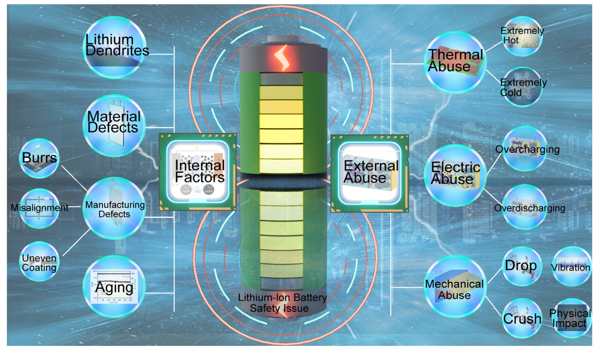
Duik dieper: Het risico begrijpen en beperken
Hier is een uitsplitsing van dit belangrijke veiligheidsonderwerp:
- De oorzaak (Interne kortsluiting): In een batterijcel zijn ultradunne lagen van positief en negatief materiaal gescheiden door een separator. Een brand kan beginnen als deze lagen raken. Dit kan worden veroorzaakt door een microscopische productiefouten of als de batterij is gevallen, gedeukt, of doorboord, Interne schade veroorzaken.
- De rol van kwaliteitscontrole: Gerenommeerde batterijfabrikanten investeren zwaar in de productie van schone kamer en multi-fase testen (inclusief röntgenfoto's en verouderingstests) Om cellen te detecteren en te screenen met potentiële defecten. Dit is de eerste en belangrijkste verdedigingslinie.
- Het LFP -veiligheidsvoordeel: Dit is cruciaal. LFP (Lithium-ijzerfosfaat) Chemie is inherent veel chemischer en thermisch stabieler dan andere lithium-iontypen (Zoals NMC of LCO gevonden in telefoons en laptops). Zelfs als een LFP -cel zou falen, Het is veel waarschijnlijker om rook te luchten en veilig te falen in plaats van uit te barsten in een gewelddadig vuur.
- Het belang van een beschermend systeem: Een professional 48v Wall gemonteerde batterij is niet alleen een batterij; Het is een Bess. De robuuste, Beschermende behuizing is ontworpen om de fysieke schade te voorkomen die kan leiden tot een interne korte. De interne BMS biedt ook een laag constante monitoring.
De veiligheid van onze klanten is onze topprioriteit. Daarom gebruiken we exclusief LFP-batterijen van fabrikanten van wereldklasse. We kennen hun rigoureuze kwaliteitscontrole en de inherente veiligheid van de LFP -chemie bieden het hoogste niveau van bescherming en gemoedsrust voor een systeem dat in uw huis is geïnstalleerd.
Een 48V -batterij is de ruggengraat van een krachtig en efficiënt energieopslagsysteem. Begrijpen hoe lang het zal duren, is een eenvoudige berekening op basis van zijn capaciteit (Ah) En uw lading (W). Modern 48v Wall gemonteerde batterij systemen, Gebouwd met veilige en langdurige LFP-technologie, Bied een betrouwbare, onderhoudsarme, en langetermijnoplossing voor energieonafhankelijkheid en back-upkracht.
Als u vragen heeft over het ontwerpen van een 48V -batterijsysteem, het afmaken van een zonne -array, Of wil de veiligste en meest betrouwbare batterijoplossingen voor uw huis verkennen, Ons expertteam bij GYCX Solar is er om te helpen. Neem contact met ons op voor een professioneel consult! Gycxsolar verwelkomt uw consult, Onze experts zullen u een tijdige en bevredigende oplossing geven.
Het verkennen van de risico's van lithiumbatterijen kan u helpen geïnformeerde beslissingen te nemen over het gebruik en opslag hun gebruik ervan. ↩
